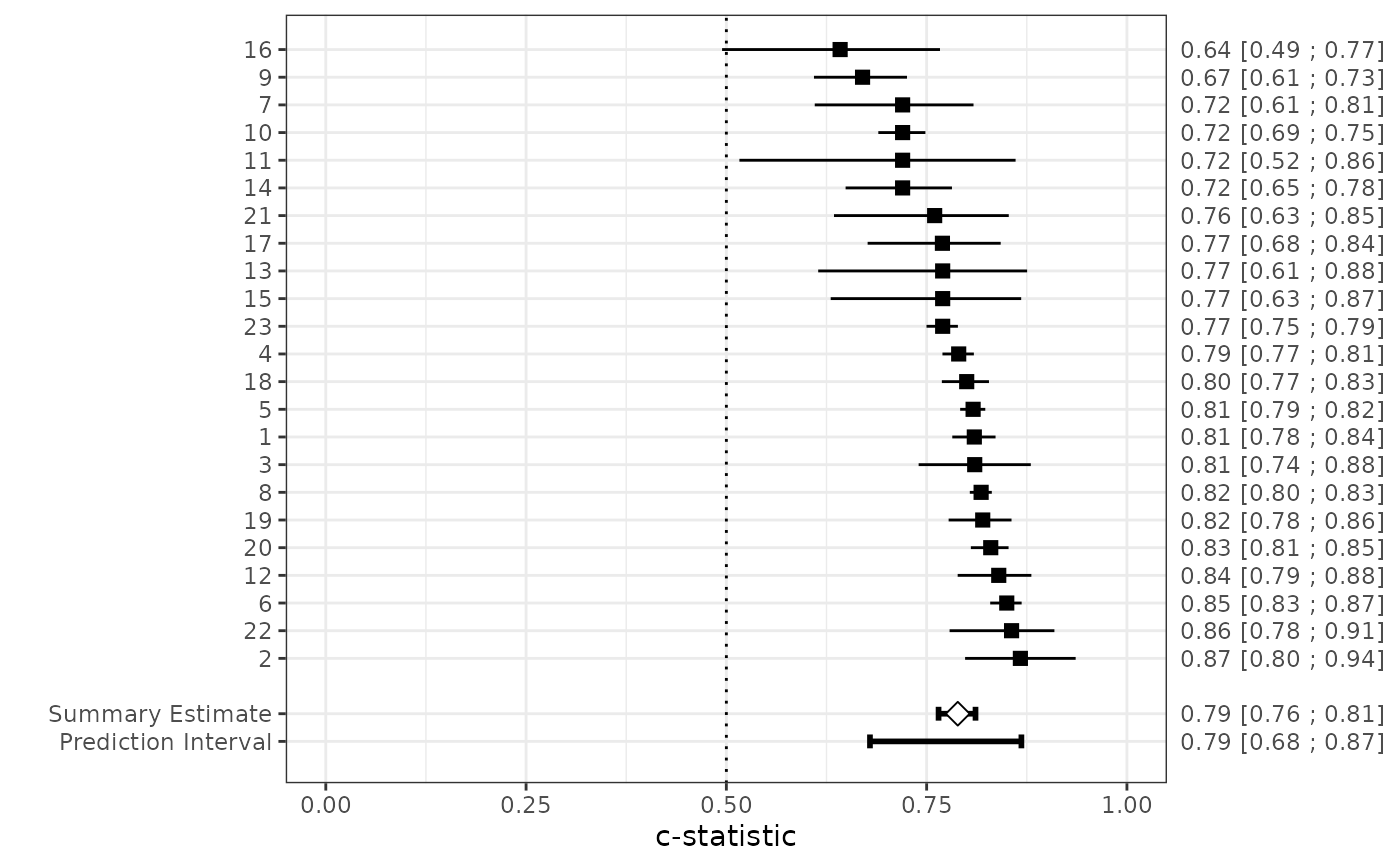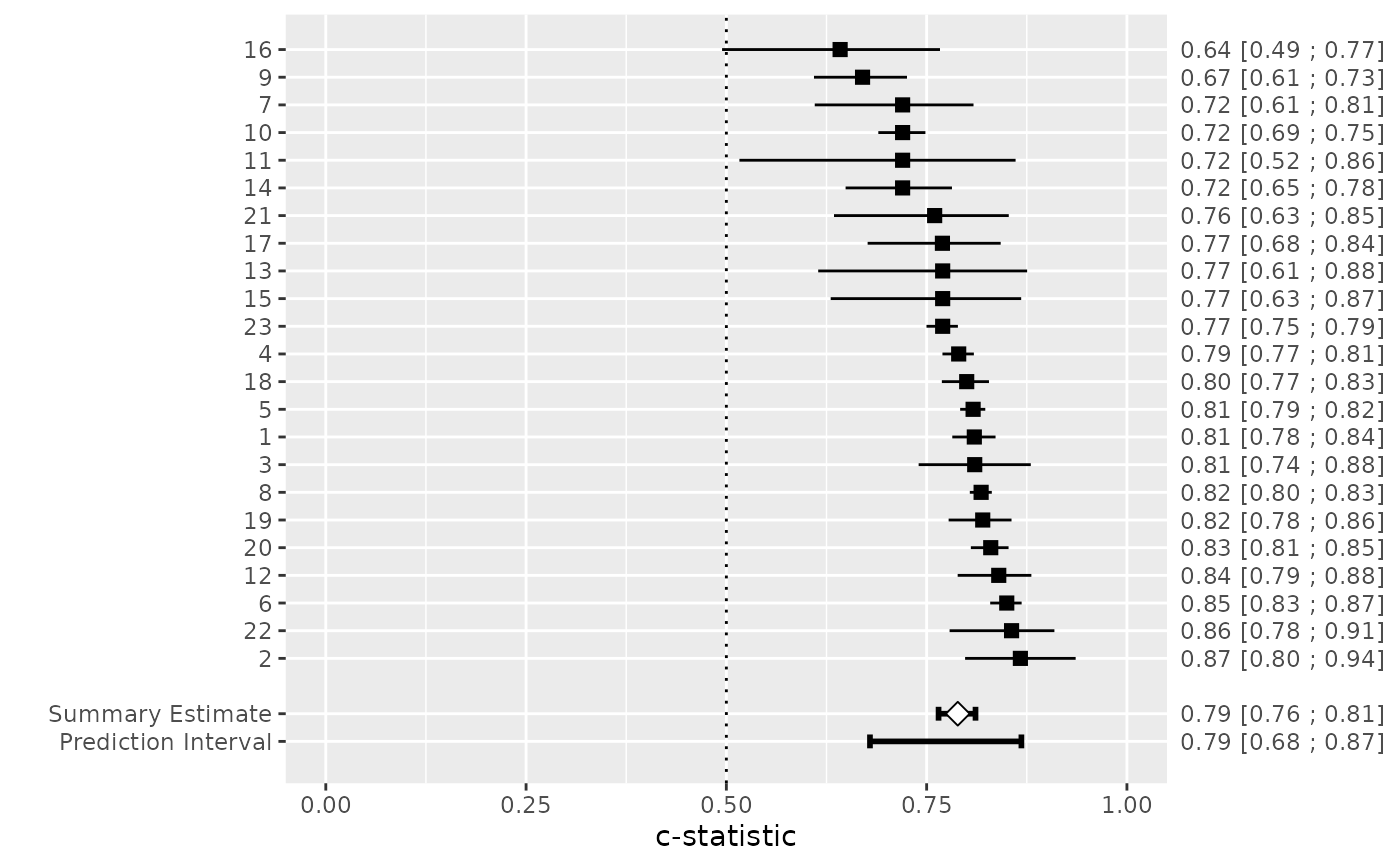Function to create forest plots for objects of class "valmeta".
Usage
# S3 method for class 'valmeta'
plot(x, ...)Arguments
- x
An object of class
"valmeta"- ...
Additional arguments which are passed to forest.
Details
The forest plot shows the performance estimates of each validation with corresponding confidence intervals. A polygon is added to the bottom of the forest plot, showing the summary estimate based on the model. A 95% prediction interval is added by default for random-effects models, the dotted line indicates its (approximate) bounds.
References
Debray TPA, Damen JAAG, Snell KIE, Ensor J, Hooft L, Reitsma JB, et al. A guide to systematic review and meta-analysis of prediction model performance. BMJ. 2017;356:i6460.
Lewis S, Clarke M. Forest plots: trying to see the wood and the trees. BMJ. 2001; 322(7300):1479–80.
Riley RD, Higgins JPT, Deeks JJ. Interpretation of random effects meta-analyses. BMJ. 2011 342:d549–d549.
See also
When a Bayesian meta-analysis was conducted, the prior and posterior distribution can be visualized using dplot.valmeta.
Further, the running means and the presence of autocorrelation can be inspected using rmplot.valmeta and, respectively,
acplot.valmeta.


